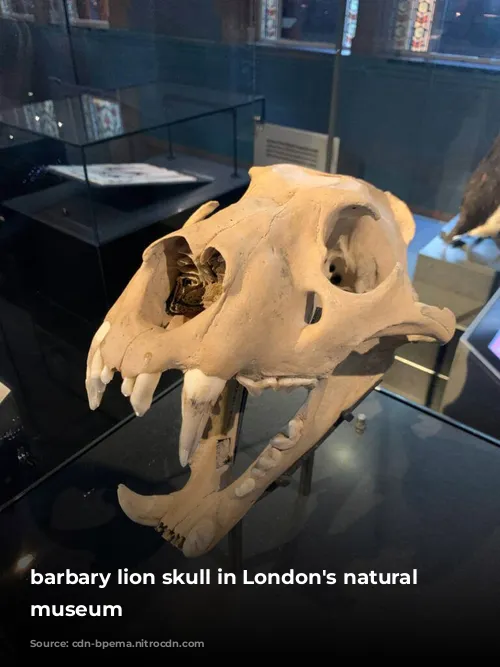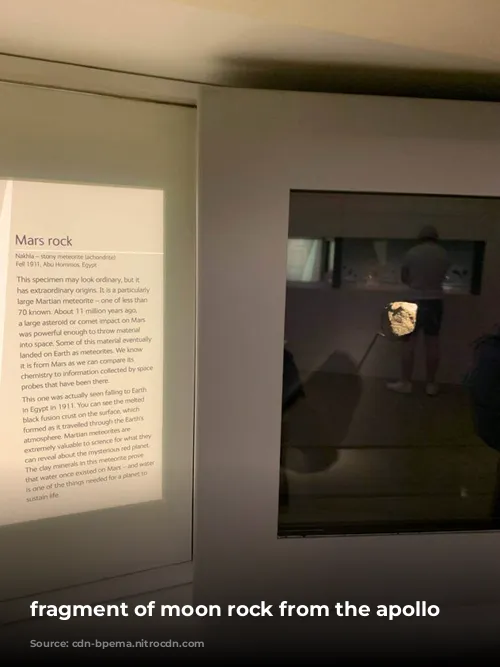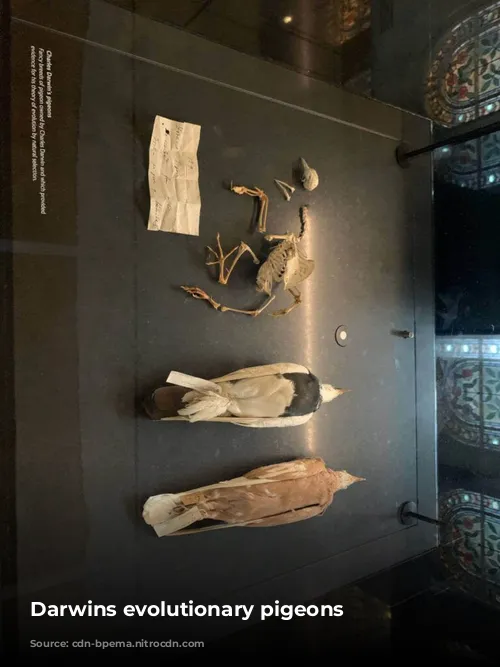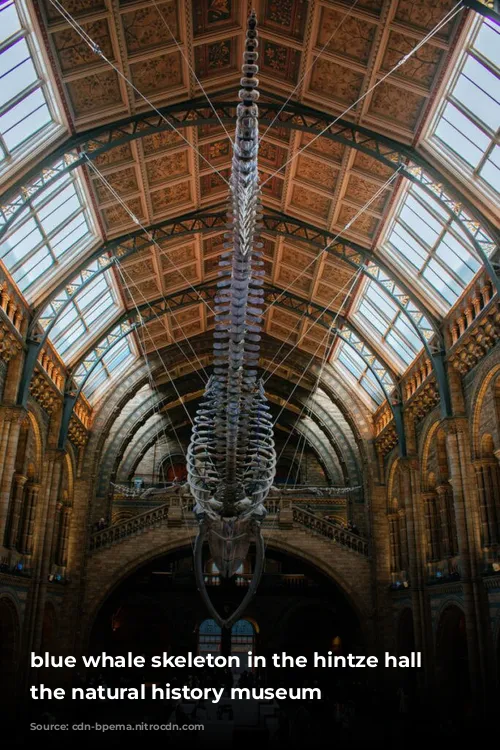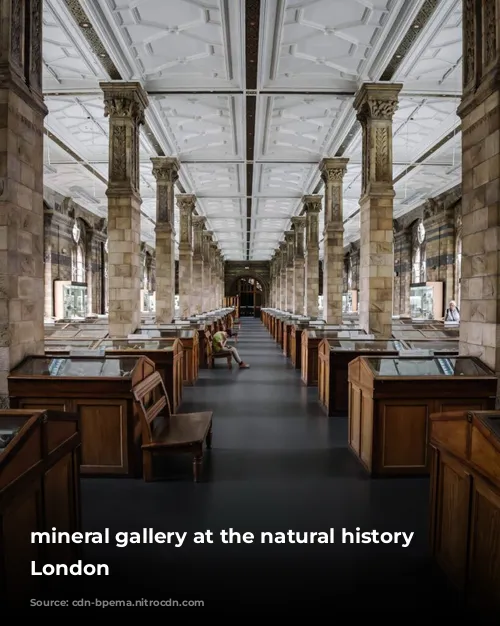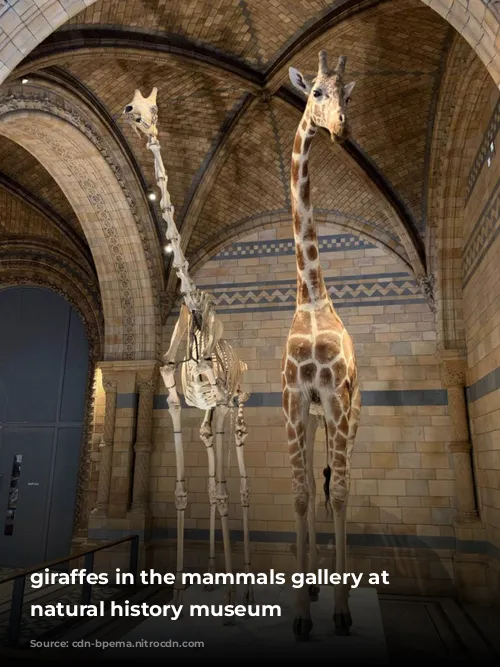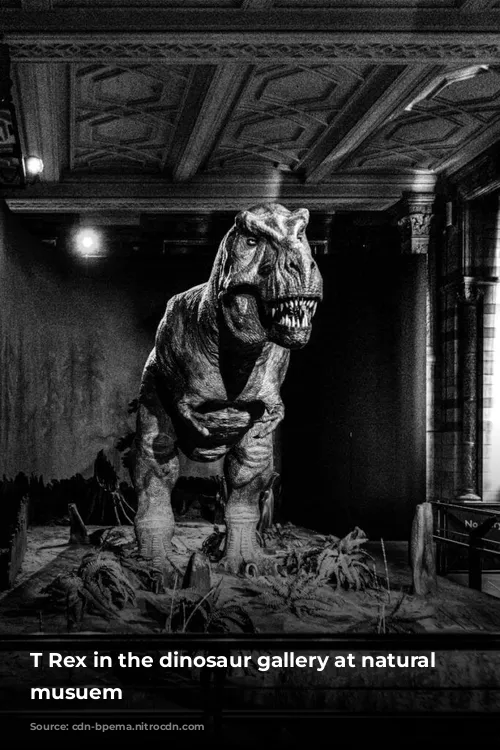Step into a world of giants! The Dinosaur Gallery at the Natural History Museum is a captivating journey through prehistoric times. Witness a breathtaking collection of dinosaur skeletons, from the petite, feathered dinosaurs to the colossal sauropods, towering over visitors. These magnificent creatures are accompanied by an array of related specimens, including fossils of ancient plants, insects, and marine reptiles.
Get a glimpse into the lives of dinosaurs. Explore the gallery and uncover the fascinating story of their evolution, their habitats, and their relationships with other prehistoric creatures. This incredible display showcases the rich tapestry of dinosaur history, offering a glimpse into the vibrant ecosystems that thrived millions of years ago.
Discover a global collection. The museum’s dinosaur collection boasts specimens from all corners of the world, including iconic sites like the Morrison Formation in the western United States, the Nemegt Basin in Mongolia, and the Isle of Wight in England. Each specimen holds a unique story and sheds light on the global reach of these magnificent creatures.
Experience the awe-inspiring wonders. Be prepared to be amazed by the animated T Rex, a ferocious predator brought to life, and the imposing Triceratops skull, a testament to the sheer size and power of these prehistoric giants.
Whether you’re a seasoned paleontologist or a curious visitor, the Dinosaur Gallery promises an unforgettable experience. Let yourself be transported back in time and marvel at the wonders of the dinosaur world.
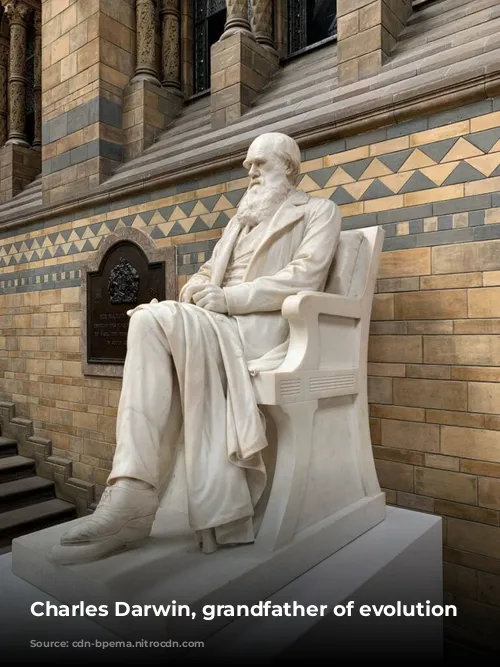
Mammals: A Glimpse into Diversity
The museum’s mammal collection offers a fascinating window into the world of our furry, feathered, and scaled neighbors. From the majestic elephants to the tiny shrews, this remarkable collection highlights the incredible adaptations and evolutionary processes that have shaped these diverse creatures over time.
Explore the origins of these remarkable creatures. The mammals on display are a testament to the museum’s commitment to research and conservation. They have been acquired through scientific expeditions, private donations, and other avenues. These specimens offer a unique opportunity to observe the intricate details of their anatomy, showcasing the beauty and complexity of nature.
Journey to remote regions. Many of these specimens have been collected from remote corners of the globe, providing a rare glimpse into the animal life that thrives in these often-untouched environments. These treasures provide valuable information about the unique adaptations and behaviors of these animals, contributing to our understanding of the world around us.
Unearth the stories of the past. The collection also includes historic specimens, offering a glimpse into the past and the changes that have occurred in the natural world over time. Witness the evolution of species, the impact of human activities on wildlife, and the remarkable resilience of life on Earth.
The mammal collection is a celebration of diversity and a reminder of the vital role mammals play in our planet’s ecosystems.
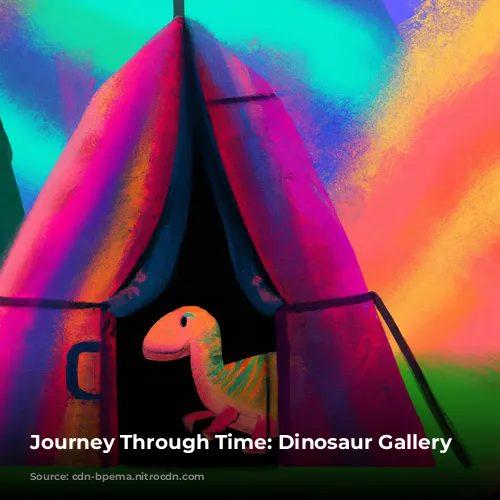
Royal Lions: Symbols of Power and a Legacy of Tragedy
The Tower of London holds a fascinating tale of power, prestige, and the enduring presence of lions in English culture. Two skulls, believed to have belonged to royal lions during the Plantagenet rule, were discovered at the Tower of London. These majestic creatures once symbolized the power and grandeur of the monarchy, but a recent analysis revealed a heartbreaking story.
A glimpse into the past reveals a dark truth. The first skull dates back to between 1280 and 1385, while the second is estimated to be from between 1420 and 1480. Despite their status as symbols of royal power, these magnificent creatures were not well cared for. Evidence suggests they suffered from malnutrition, leading to bone deformities, blindness, and ultimately their deaths.
The legacy of the Barbary lion. These lions were males of a subspecies that is now extinct in the wild, the Barbary lion. Once found roaming the Atlas Mountains and other regions of North Africa, the Barbary lion’s disappearance is a poignant reminder of the fragility of life and the importance of conservation efforts. It’s unclear when this subspecies vanished from the wild, but it’s believed to have occurred during the 20th century.
The lion’s enduring presence in English culture. Lions have been a symbol of royalty in England for centuries. The first recorded use of the lion as a symbol of royalty was by King Richard I of the Plantagenet Dynasty, also known as “Richard the Lionheart.” He incorporated the image of three lions into his royal arms, cementing the lion’s place in English history and culture. The Tower of London’s Royal Zoo, where exotic animals were kept, operated until the 19th century, further solidifying the connection between lions and the British monarchy.
The story of the royal lions is a reminder that even the most powerful symbols can have a tragic side. It highlights the importance of responsible care for all creatures, especially those under our protection.

Earth Hall: Unveiling the Dynamic Heart of Our Planet
Step into the Earth Hall at the Natural History Museum and embark on an extraordinary journey into the heart of our planet. This awe-inspiring exhibition unveils the powerful forces that shape our world, from the rumbling of earthquakes to the fiery fury of volcanoes.
Experience the science of our planet. Interactive exhibits and stunning displays bring these dynamic natural phenomena to life. Learn about the science behind earthquakes, how they are measured, and their impact on communities. Explore the different types of volcanoes, from gentle shield volcanoes to explosive cinder cones, and discover their crucial role in shaping the Earth’s surface.
Uncover the secrets of our planet. The Earth Hall offers a unique opportunity to delve into the inner workings of our planet and understand the intricate processes that drive its constant evolution.
Feel the power of nature. Witness the force of nature firsthand through immersive experiences. Feel the ground shake beneath your feet during a simulated earthquake and marvel at the breathtaking displays of volcanic eruptions.
Leave with a newfound appreciation for the incredible forces that shape our planet and the delicate balance of life on Earth.
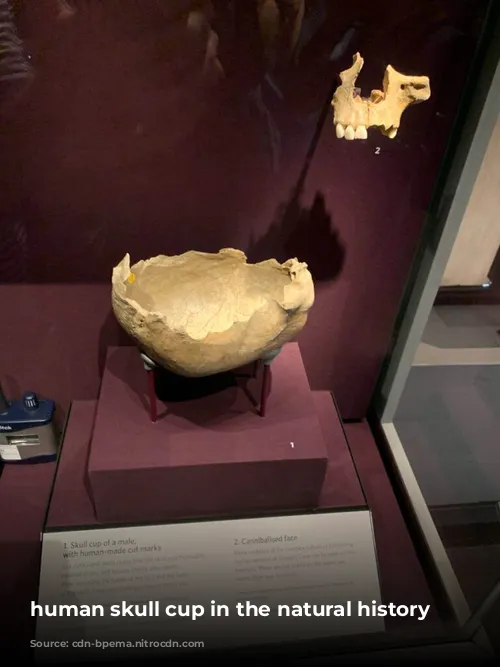
Darwin’s Pigeons: A Legacy of Evolution
The Natural History Museum houses a remarkable collection of Charles Darwin’s pigeons, a testament to his groundbreaking theory of evolution. Darwin, an avid pigeon fancier, kept a variety of breeds at his home. He was fascinated by the wide variation in their forms and colors, leading him to question how these differences arose and how they were passed down through generations.
Darwin’s quest for understanding. This curiosity sparked a scientific journey that led him to develop his theory of evolution by natural selection, famously outlined in his book “On the Origin of Species.” His observations of pigeons played a pivotal role in shaping his groundbreaking ideas, leading to a revolution in our understanding of life on Earth.
A tangible connection to scientific history. The museum’s collection of Darwin’s pigeons includes a variety of breeds, showcasing the incredible diversity of these birds. These specimens provide a tangible link to one of the greatest minds in the history of science, offering visitors a glimpse into the origins of Darwin’s revolutionary theory.
Darwin’s pigeons serve as a constant reminder of the power of observation, curiosity, and the relentless pursuit of knowledge. Their story is a testament to the ongoing process of discovery and the remarkable potential of the natural world.

